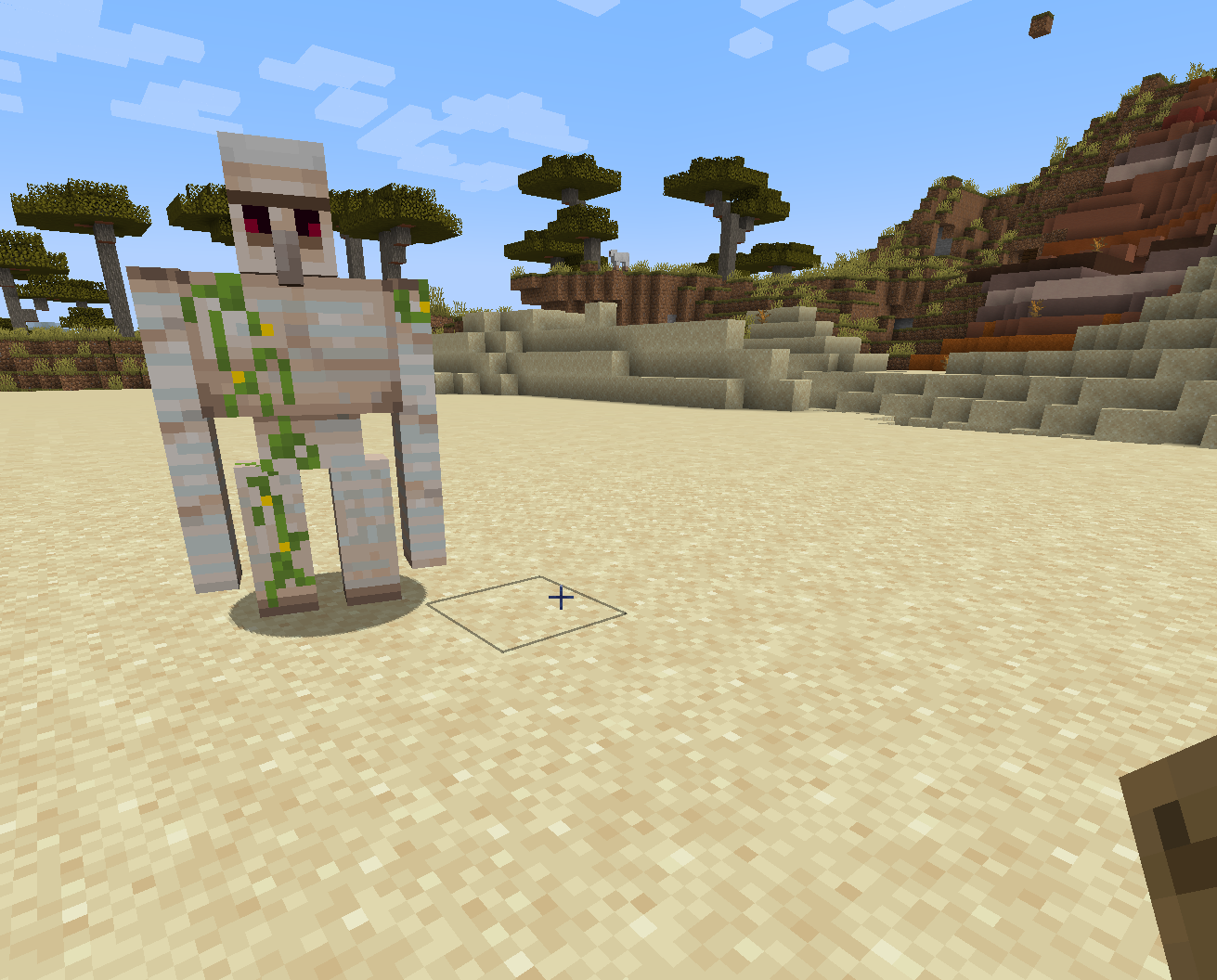Python Variables
Introduction
We now have everything ready to start learning some Python!
Note
There are many other excellent Python beginner’s tutorials available for free on the internet, such as:
My tutorials are going to focus on quickly getting into interacting with the world of Minecraft. We won’t be going into programming theory to any great degree. Therefore, a tutorial like python.land will be needed to fill in the background if you want to get serious with Python.
Follow along with these tutorials by having both you Minecraft client and your VSCode windows visible on your screen. You should try out the Python commands shown here and feel free to experiment.
Each time you come back to work on these tutorials you can get yourself ready to go by following Setup for each Tutorial.
Variables, Types and Operators
Variables provide a place to hold some bit of data for use inside of a computer program. They have the following properties:
Name: a name that is used to identify the variable.
Value: the data that the variable holds.
Type: the type of data that the variable holds.
Operators are used to make changes to variables. For example the = operator
assigns a value to a variable. In Python we can quickly create a variable
using assignment. Try out the commands below:
Command |
Name |
Value |
Type |
|---|---|---|---|
birth_year = 1964 |
birth_year |
1964 |
int (a whole number) |
my_height = 1.94 |
my_height |
1.94 |
float (a decimal number) |
my_name = “giles” |
my_name |
“giles” |
str (a string of characters) |
Now you can use the print function to see the value of the variables:
In [1]: birth_year = 1964
In [2]: my_height = 1.94
In [3]: my_name = "giles"
In [4]: print(birth_year, my_height, my_name)
1964 1.94 giles
Let’s try another operator - or minus. This operator subtracts the value of
one variable from another. It behaves just like - in basic arithmetic.
Try out the commands below:
In [6]: age = 2022 - birth_year
In [7]: age
Out[7]: 58
This makes a calculation from the value 2022 and the value of the variable
birth_year and assigned it to variable age. Note that I did not
use print to see the value, I simply typed the variable name age,
Interactive Python will always print the value returned by the last
input command.
Variables in Minecraft
MCIWB provides some built in variables that you can use. The most important
is called world and it is your entry point into most of the functions
provided by the library.
World is a special variable called an object which can have many values
stored in its properties. Objects can also have methods which
execute code.
One property of world is player and a property of player is pos
which holds the player’s current position.
Thus you can access the player’s location like this:
In [10]: world.player.pos
Out[10]: Vec3(x=633, y=73, z=-1665)
Try moving your player around and see how the position changes.
Note
You will notice that the position is reported as a type of variable called Vec3. This holds the Minecraft coordinates that you may be familiar with if you have used e.g. the teleport command.
For lots of detail on what this all means see Minecraft’s Coordinate System.
However, for the moment you may prefer to just work through the first few tutorials and come back to that level of detail later on.
An example of a method on world is set_block which will place
a block in a particular position. Make sure your player is standing
on the flat area of sand and try this:
world.set_block(pos, Item.IRON_BLOCK)
Your player should have been bumped out of their position and if you turn around you will see an iron block.
(I’m no longer showing the In[] prompt in the examples so you can use copy and paste to easily try these examples)
OK, let’s make an iron golem! Copy and paste these commands into the Python terminal:
world.set_block(pos, Item.IRON_BLOCK)
arms = pos + Direction.UP
world.set_block(arms, Item.IRON_BLOCK)
world.set_block(arms + Direction.EAST, Item.IRON_BLOCK)
world.set_block(arms + Direction.WEST, Item.IRON_BLOCK)
world.set_block(arms + Direction.UP, Item.CARVED_PUMPKIN)
Yay! You can paste again to create another one.

(See “Creation” in this article https://minecraft.fandom.com/wiki/Iron_Golem if you don’t know about making iron golems)
How does this work? We use set_block to place all the necessary blocks
in the world. We use the variables pos (which we set earlier) and arms
to control where those blocks are placed.
Direction provides values that will move a position by one block in a
particular direction when added/subtracted to/from that position.
So, first we place the golem’s feet at pos.
Then we move Up one block from the position pos to the arm level of
the golem and save that position in arms. Now we can move east
and west from arms to make the arms and Up to make the head.